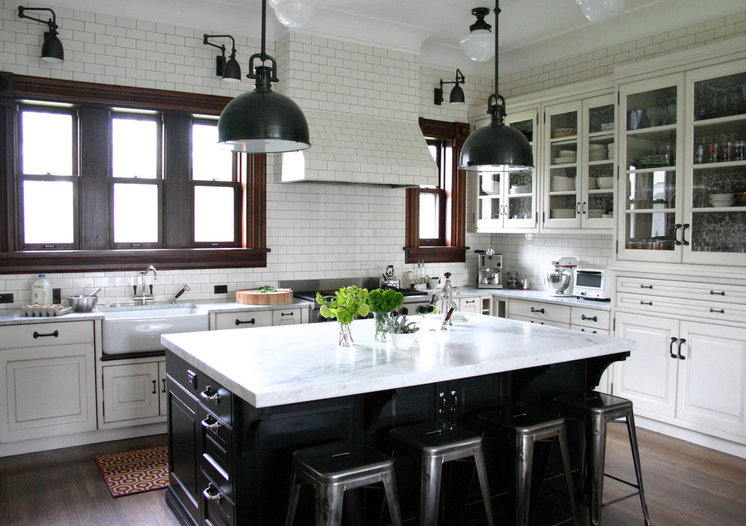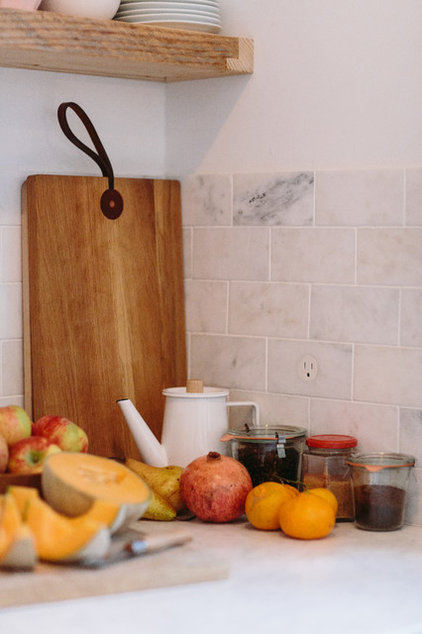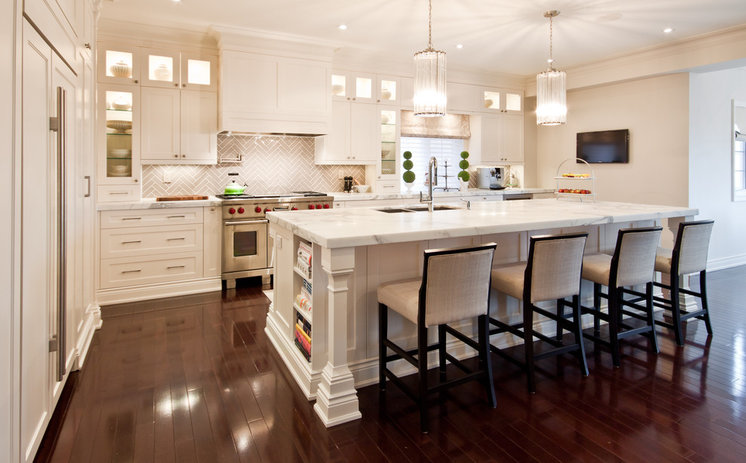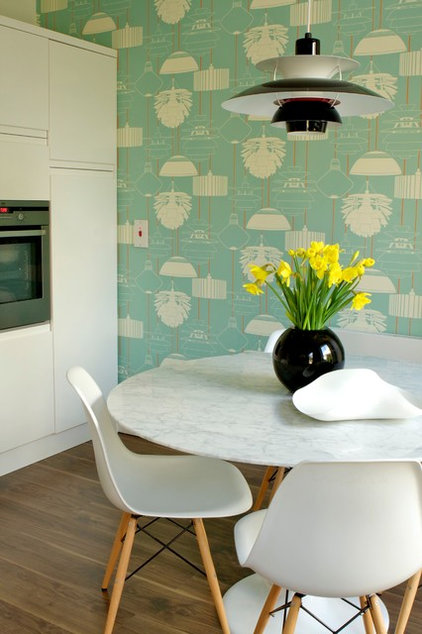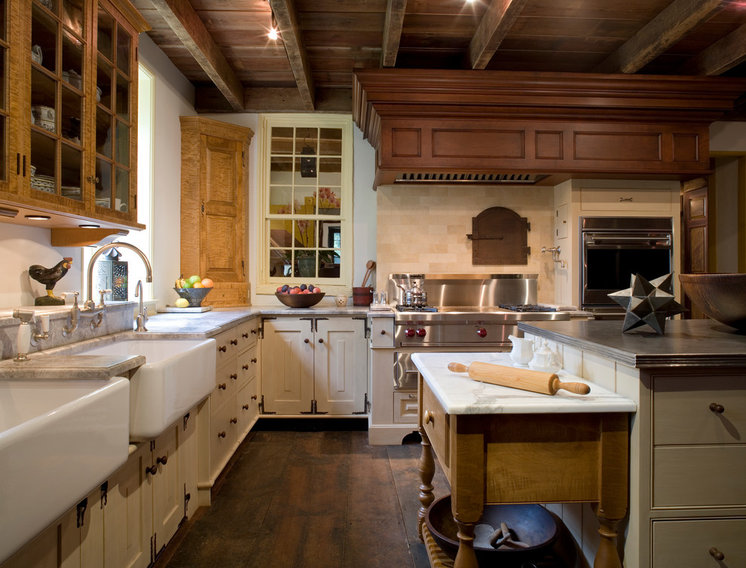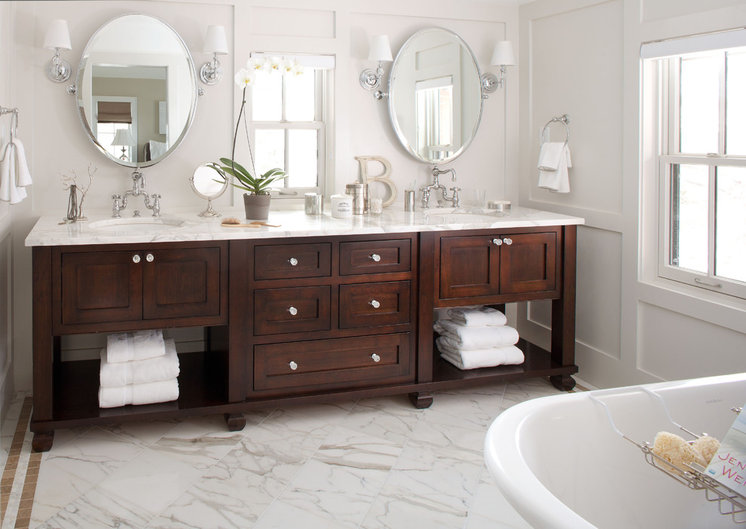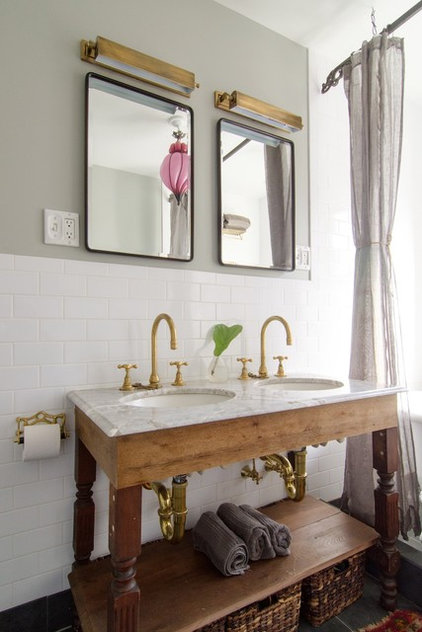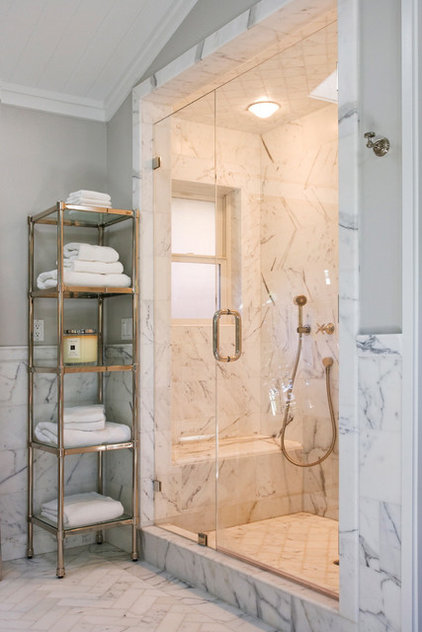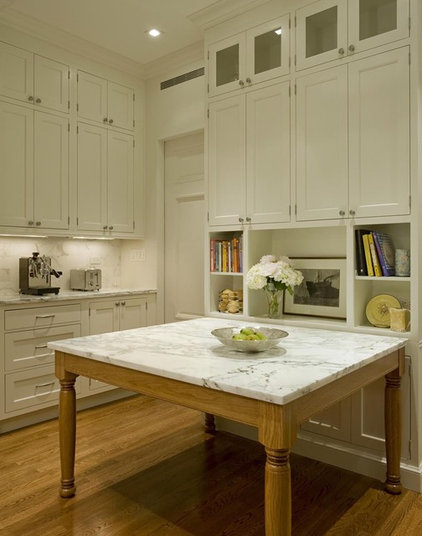How to Clean Marble Countertops and Tile
What most people don’t love, however, is the concern that comes with cleaning and caring for the popular, porous surface famously susceptible to etching and staining, especially in the kitchen.
Luckily, according to marble experts, where there’s a will, there’s a way, and caring for the classic beauty of a marble surface may be easier than you think. Here’s how to clean marble countertops.
“What people have to look out for is not necessarily staining, but etching,” Laney says. “Because anything that is acidic is going to etch the surface. That’s just the way it is.”
Etching on a marble surface happens when something like lemon juice, alcohol or tomato sauce is splashed, dripped or spilled onto it. If it is not wiped up right away, the acid reacts and eats away at the calcium carbonate in the stone, creating permanent markings that look like dull, slightly darker spots or rings on the marble. How light hits the marble determines how noticeable the etching is. In some light, the scarring will not be evident at all, while certain lighting will reveal the dulled areas.
Many consumers visit restaurants, ice cream parlors, bars and other public venues that use marble countertops to check out what a working marble surface looks like and to decide whether they can happily live with the reality.
Using White Marble: Hot Debate Over a Classic Beauty
Avoiding acidic solutions’ coming into contact with marble applies to cleaning products as well. The Marble Institute of America, or MIA, advises against using vinegar, lemon juice or other cleaners containing acid on marble, including bleach. Experts instead recommend only mild soap and water. “There’s nothing on a countertop that you can’t get off with soap and water,” Laney says.
Wiping down countertops and surfaces with warm, sudsy water and a nonabrasive sponge or cloth is the best method for cleaning, but it will not remove etching or stains that have had time to permeate the surface.
The most popular marble finishes are polished and honed. A polished finish has a glossy surface, reflects light and shows off the color and markings in the marble.
A honed finish is more satiny and smoother, with little light reflection, according to the Marble Institute. This finish is common for floors, stairs and other heavily trafficked locations.
“When you buy a honed piece of marble, it’s already etched,” Laney says. “Let’s say you cut a lemon and cause some etching on the surface. You will never see it, because it is already etched.” The tradeoff: Honed marble is more porous and will stain more easily. “A polished piece of marble will stain less but etch more,” she says. So pick your poison.
More about marble as a kitchen counter material
Laney says kitchen islands topped with marble are usually the No. 1 place you will notice etching. “It’s in the center of the kitchen, and it catches the light because you don’t have a backsplash to guard the glare,” she says.
To reduce stains and etching, Laney recommends applying a spray sealant at least once a month. “Sealers are like buying time,” she says. “What it is doing is sealing the top of the marble so things won’t penetrate quickly.
“If you were to spill red wine on a countertop and leave it overnight, you will have a stain, no matter what. However, if you wipe it up instead of leaving it sit, the sealant provides a barrier. It allows us time to clean our stains before they penetrate into the surface and actually stain it.”
She uses a cleaner twice a month on her marble countertop. “I don’t have one stain on my marble countertop,” she says, “I have etching, but I don’t have stains.”
Not all of us are as fortunate as Laney, however. In spite of our best intentions, sometimes stains happen. The Marble Institute offers the following solutions for common problems.
Oil-based stains (grease, cooking oil, cosmetics): Clean gently with a soft liquid cleanser, household detergent, ammonia or mineral spirits.
Organic stains (coffee, tea, fruit, food): Clean with a mixture of 12 percent hydrogen peroxide and a few drops of ammonia.
Paint stains: Small amounts can be removed with lacquer thinner or scraped off carefully with a razor blade.
Smoke stains: Commercial smoke removal products are available. Contact a stone professional near you for more info.
Water spots and rings: Buff with dry #0000 steel wool.
Acidic substances like milk, fruit, juice and alcohol will sometimes cause both etching and staining — a double whammy.
If you are successful in removing the stain and want to attack the etching, the MIA suggests wetting the surface with water and sprinkling on marble polishing powder. Rub the powder into the stone with a damp cloth or use a buffing pad with a low-speed power drill or polisher. Continue buffing until the etch mark disappears and the marble surface shines. Honing may be required for deep etching.
“If your counter does end up staining, you can have a professional come in and take the sealer and the stain off,” Laney says. “But what’s going to happen is you are going to end up with a honed countertop, because you can’t repolish the installed marble like you would at the fabricators or the stone suppliers.”
If stains are particularly stubborn, consider applying a poultice, or paste-like cleaning agent. Premixed commercial poultices that require adding only water can be purchased from stone maintenance supply companies.
Application is straightforward. Mix the paste according to the directions; it should have the consistency of a thick peanut butter. Slather it on the stained surface. The Marble Institute recommends applying the poultice to be about ¼ to ½ inch thick, beyond the outside of the stain. Use a wood or plastic spatula to apply the paste evenly.
After you have applied the paste, the MIA advises covering it with plastic wrap and using painter’s tape to tape the edges down. Let it sit for 24 to 48 hours. After that, remove the plastic and allow the poultice to dry. The drying process should pull the stain from the stone.
Once it has dried, remove the mixture (using a wood or plastic scraper if necessary), rinse with distilled water and buff dry with a soft cloth.
Repeat if necessary.
For marble flooring, the Marble Institute advises dust-mopping floors frequently and cleaning with a mild, phosphate-free biodegradable liquid dishwashing soap or powder, or a stone soap. Soapless cleaners minimize streaks and film. After washing, rinse with clean water and dry.
In addition, avoid using old vacuums, because metal attachments and well-worn wheels may scratch the surface.
Laney says using marble in the bathroom or powder room is usually a safe bet, because the stone won’t be exposed to the same type of treatment it would get in the kitchen. A little toothpaste isn’t going to hurt.
Laney also recommends carefully sealing the marble in the bathroom area. “Especially in the pan of a shower,” she says. “That’s really where the most wear and tear is going to happen in a bathroom. And don’t use bleach. If you bleach it, it will break the shine down. Stick to soap and water.”
If you like to entertain and often use your marble countertop for food service during parties, Laney suggests having a special pad made to protect the marble. “There are companies out there who make furniture pads for tables,” she says. “If you’re going to serve wine but may not be there to clean it up in case of a spill, you might want to have a pad made for special occasions.”
